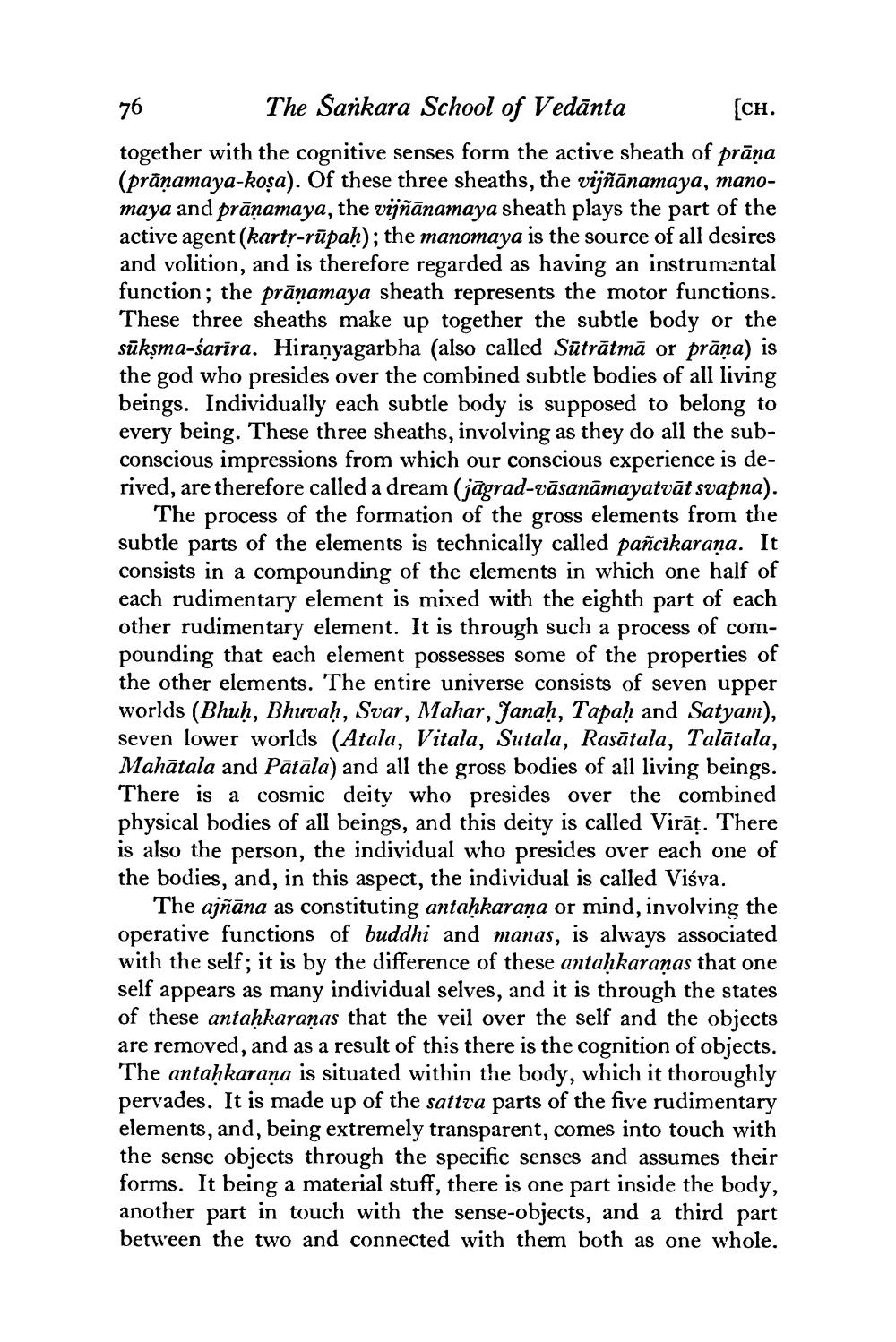________________
76
The Sankara School of Vedānta
(CH. together with the cognitive senses form the active sheath of prāņa (prāṇamaya-kosa). Of these three sheaths, the vijñānamaya, manomaya and prānamaya, the vijñānamaya sheath plays the part of the active agent (kartr-rūpah); the manomaya is the source of all desires and volition, and is therefore regarded as having an instrumental function; the prānamaya sheath represents the motor functions. These three sheaths make up together the subtle body or the sūkşma-śarīra. Hiranyagarbha (also called Sūtrātmā or prāņa) is the god who presides over the combined subtle bodies of all living beings. Individually each subtle body is supposed to belong to every being. These three sheaths, involving as they do all the subconscious impressions from which our conscious experience is derived, are therefore called a dream (jāgrad-vāsanāmayatvāt svapna).
The process of the formation of the gross elements from the subtle parts of the elements is technically called pañcikarana. It consists in a compounding of the elements in which one half of each rudimentary element is mixed with the eighth part of each other rudimentary element. It is through such a process of compounding that each element possesses some of the properties of the other elements. The entire universe consists of seven upper worlds (Bhuḥ, Bhuvaḥ, Svar, Mahar, Janaḥ, Tapaḥ and Satyam), seven lower worlds (Atala, Vitala, Sutala, Rasātala, Talātala, Mahātala and Pātāla) and all the gross bodies of all living beings. There is a cosmic deity who presides over the combined physical bodies of all beings, and this deity is called Virāt. There is also the person, the individual who presides over each one of the bodies, and, in this aspect, the individual is called Viśva.
The ajñāna as constituting antahkarana or mind, involving the operative functions of buddhi and manas, is always associated with the self; it is by the difference of these antaḥkaraņas that one self appears as many individual selves, and it is through the states of these antaḥkaraņas that the veil over the self and the objects are removed, and as a result of this there is the cognition of objects. The antahkarana is situated within the body, which it thoroughly pervades. It is made up of the sattva parts of the five rudimentary elements, and, being extremely transparent, comes into touch with the sense objects through the specific senses and assumes their forms. It being a material stuff, there is one part inside the body, another part in touch with the sense-objects, and a third part between the two and connected with them both as one whole.




